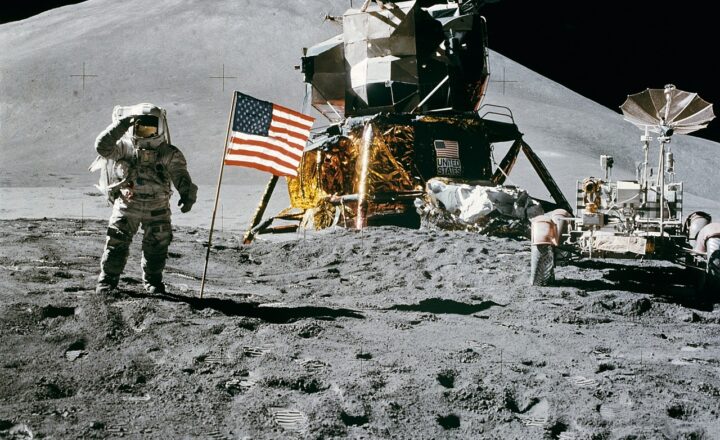
Throughout history, human beings have been driven by an insatiable curiosity to explore the unknown. From the depths of the oceans to the vastness of outer space, adventurers have faced incredible dangers in their quest to expand the boundaries of human knowledge and experience. In this article, we delve into some of the most perilous explorations that tested the limits of human courage and determination.
1. The Antarctic Expeditions
The harsh environment of Antarctica has lured explorers seeking to unlock its secrets. One of the most notable expeditions was led by Ernest Shackleton from 1914 to 1916. Shackleton’s journey aimed to traverse the Antarctic continent but quickly turned into a fight for survival when their ship, the Endurance, became trapped in ice.
Despite the extreme temperatures, lack of resources, and isolation, Shackleton and his crew showed incredible bravery. They trekked across ice fields, faced treacherous weather, and survived on limited rations. Shackleton’s leadership and the crew’s resilience allowed them to navigate back to safety, demonstrating extraordinary human courage in the face of dire circumstances.
2. The Climb of Mount Everest
The journey to the summit of Mount Everest is one of the ultimate tests of human endurance and bravery. Since Sir Edmund Hillary and Tenzing Norgay first reached the summit in 1953, thousands have followed in their footsteps, facing life-threatening challenges along the way.
Climbers encounter high-altitude sickness, avalanches, fierce storms, and freezing temperatures. The 1996 Mount Everest disaster highlighted the extreme risks of this endeavor, with eight climbers losing their lives during a single storm. Yet, despite these dangers, adventurers continue to attempt the ascent, drawn by the thrill of conquering the world’s highest peak.
3. Underwater Exploration
Explorers have also turned their gaze toward the depths of the ocean, facing the harsh realities of underwater exploration. The bathyscaphe Trieste, piloted by Jacques Piccard and Don Walsh in 1960, descended to the depths of the Mariana Trench, the deepest part of the ocean, reaching depths of nearly 36,000 feet.
The journey required enormous courage, as the pressure at that depth is over 1,000 times the standard atmospheric pressure at sea level. Surrounded by darkness and the unknown, Piccard and Walsh spent approximately 20 minutes at the ocean’s bottom, conducting observations and gathering samples before their triumphant ascent.
4. The Space Race
The Space Race of the 20th century showcased the extraordinary courage of astronauts willing to leave the comfort of Earth for the vastness of outer space. One of the most significant missions was Apollo 11 in 1969, when Neil Armstrong and Buzz Aldrin became the first humans to walk on the Moon.
This daring journey carried immense risks, including the possibility of fuel shortages, equipment failures, and the unknowns of space travel. Armstrong’s famous words, “That’s one small step for man, one giant leap for mankind,” echo the bravery it took to venture into the cosmos.
Tragically, not all space missions ended successfully. The Apollo 1 disaster in 1967 claimed the lives of three astronauts during a pre-launch test. However, the spirit of exploration persisted, highlighting humanity’s courage to confront the dangers of the unknown.
5. The Conquests of the Poles
The North and South Poles have long captivated explorers due to their inhospitable environments. The race to reach the North Pole saw notable figures like Robert Peary and Frederick Cook claiming to have reached the pole in the early 1900s, although debates about their true achievements continue.
In 1911, Roald Amundsen and Robert Falcon Scott explored Antarctica in the race to reach the South Pole. Amundsen’s successful expedition was marked by meticulous planning and preparedness, allowing him and his team to efficiently navigate the harsh conditions. In contrast, Scott’s poorly equipped and ill-fated expedition led to tragedy, with all members perishing on the return journey, illustrating the grave dangers explorers faced.
6. The Quest for the Northwest Passage
The Northwest Passage, a sea route through the Arctic connecting the Atlantic and Pacific Oceans, has puzzled and enticed explorers for centuries. The expedition led by Sir John Franklin in 1845 aimed to navigate this passage but ended in tragedy.
Franklin’s crew encountered extreme weather, ice-bound ships, and dwindling supplies. Despite initial optimism, the entire expedition was lost, with later search parties uncovering only fragments of their fate. The quest for the Northwest Passage showcases the profound dangers and uncertainties faced by adventurers in the pursuit of discovery.
Conclusion
The history of exploration is rife with tales of courage and peril. These adventurous individuals risked their lives to uncover the mysteries of our world and beyond. Their stories remind us of the fragile nature of human existence and the relentless desire to push boundaries for the sake of knowledge. Exploring the unknown, whether it be the polar ice caps, the depths of the ocean, or the far reaches of space, reveals not only the indomitable spirit of humanity but also serves as an inspiration for future generations to continue exploring.
With every dangerous venture into the unknown, explorers embody a courageous spirit—one that propels us forward in our quest for discovery and understanding of the expansive world we inhabit.






